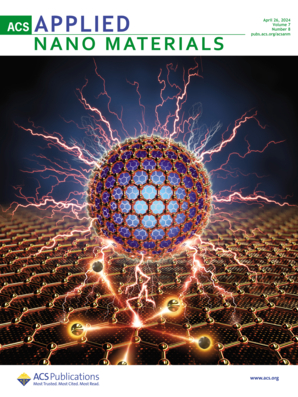Calcium Chloride as an Ionic Response Modulator in Metal Organic Framework-filled Nanopores (MOF@SSNs): Enhancing Ionic Current Saturation and Selectivity
IF 5.3
2区 材料科学
Q2 MATERIALS SCIENCE, MULTIDISCIPLINARY
引用次数: 0
Abstract
We studied ionic transport properties of UiO-66 metal-organic framework-modified solid-state nanochannels (MOF@SSNs) embedded in polyethylene terephthalate (PET) membranes, focusing on the effect of calcium ions from chloride salt (CaCl2) acting as ionic response modulator. We observed a behavior known as ionic current saturation (ICS) regime in a broad pH range, which can be attributed to specific binding of divalent calcium ions to free-carboxylate moieties present in the MOF-filled nanochannels. Such binding provokes a surface charge increase and causes the ICS regime to dominate the response even in alkaline aqueous environments, which were previously shown to feature simple ohmic regimes. The primary ionic transport mechanism operating involves the presence of (mesoscopic) constructional porosity arising from defects and gaps generated during MOF formation within PET nanochannels, rather than intrinsic MOF microporosity also present. The hereby discussed example illustrates how, through straightforward chemical modification, ionic transport properties of the nanochannels can be modulated to feature specific responses necessary for high-impact applications such as ion selective transport, biosensing, or energy generation.氯化钙作为金属有机框架填充纳米孔(MOF@SSNs)中的离子响应调制器:提高离子电流饱和度和选择性
我们研究了嵌入聚对苯二甲酸乙二醇酯(PET)膜的 UiO-66 金属有机框架修饰固态纳米通道(MOF@SSNs)的离子传输特性,重点研究了作为离子响应调制剂的氯盐(CaCl2)中钙离子的影响。我们在广泛的 pH 值范围内观察到了一种被称为离子电流饱和(ICS)机制的行为,这可归因于二价钙离子与 MOF 填充纳米通道中存在的游离羧酸分子的特异性结合。这种结合会导致表面电荷增加,即使在碱性水环境中,ICS 状态也会主导反应。运行的主要离子传输机制涉及 PET 纳米通道内 MOF 形成过程中产生的缺陷和间隙所形成的(介观)构造孔隙,而不是 MOF 固有的微孔。本文讨论的示例说明了如何通过直接的化学修饰来调节纳米通道的离子传输特性,使其具有离子选择性传输、生物传感或能源生成等高影响力应用所需的特定响应。
本文章由计算机程序翻译,如有差异,请以英文原文为准。
求助全文
约1分钟内获得全文
求助全文
来源期刊

ACS Applied Nano Materials
Multiple-
CiteScore
8.30
自引率
3.40%
发文量
1601
期刊介绍:
ACS Applied Nano Materials is an interdisciplinary journal publishing original research covering all aspects of engineering, chemistry, physics and biology relevant to applications of nanomaterials. The journal is devoted to reports of new and original experimental and theoretical research of an applied nature that integrate knowledge in the areas of materials, engineering, physics, bioscience, and chemistry into important applications of nanomaterials.
 求助内容:
求助内容: 应助结果提醒方式:
应助结果提醒方式:


